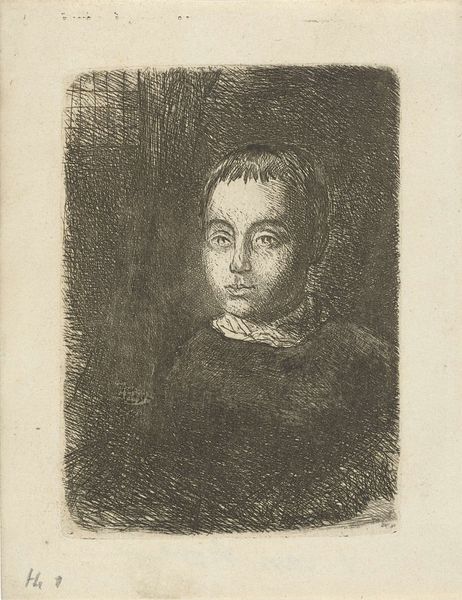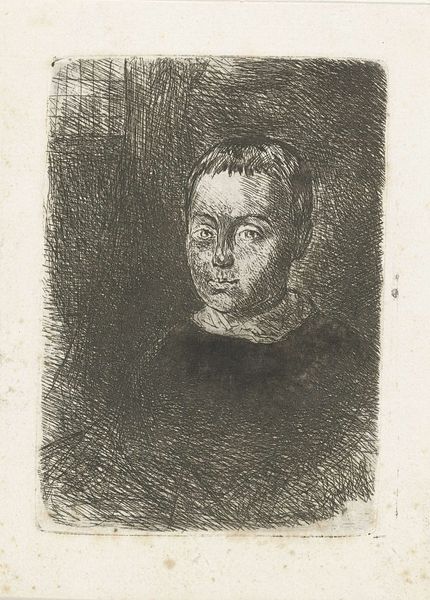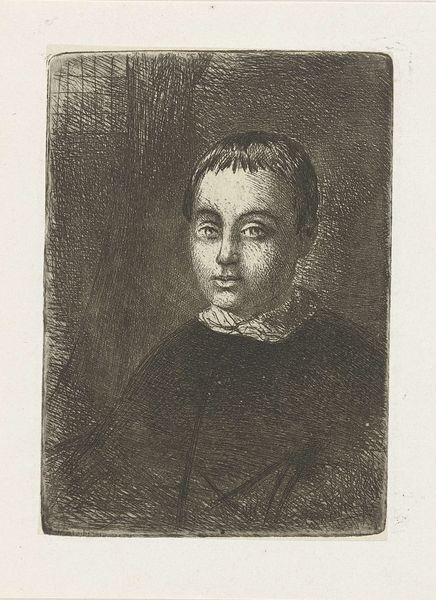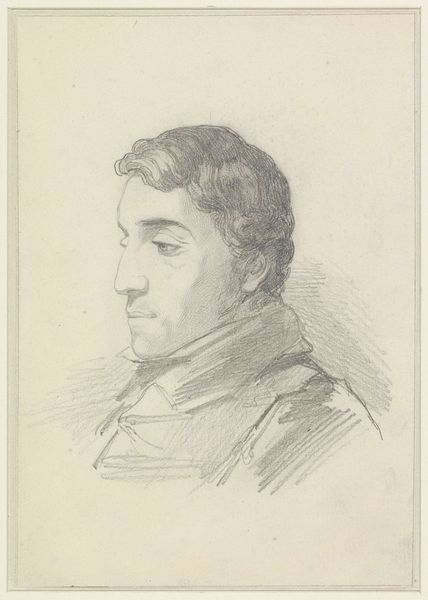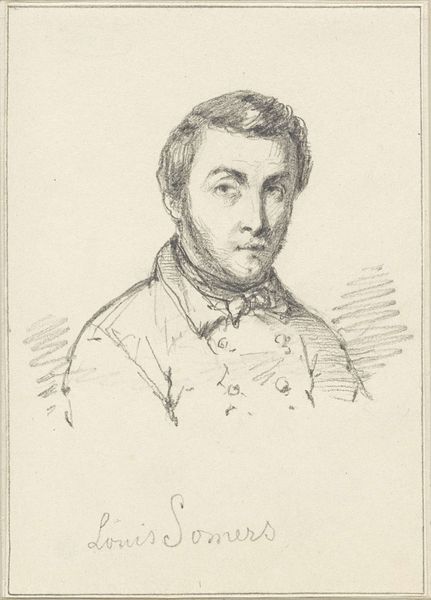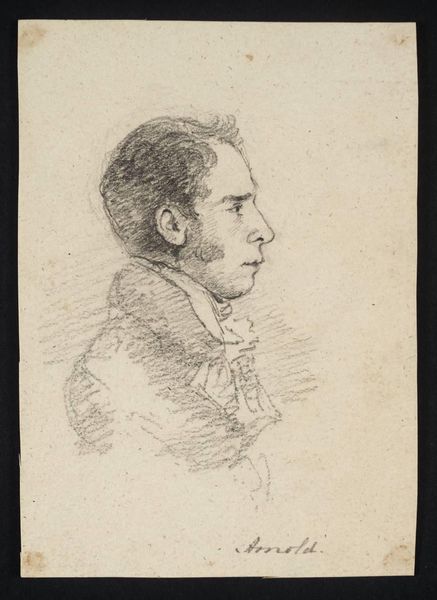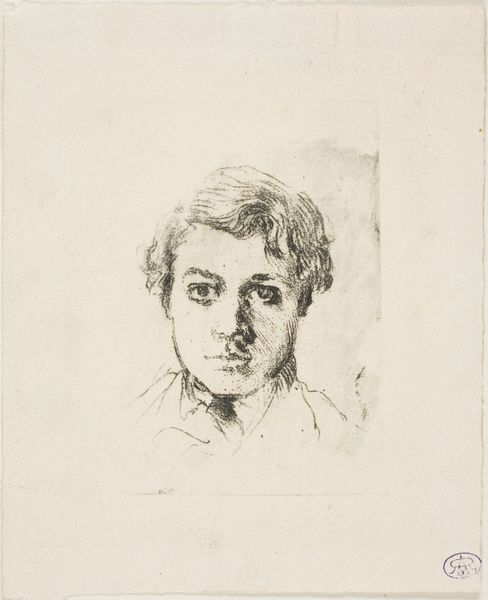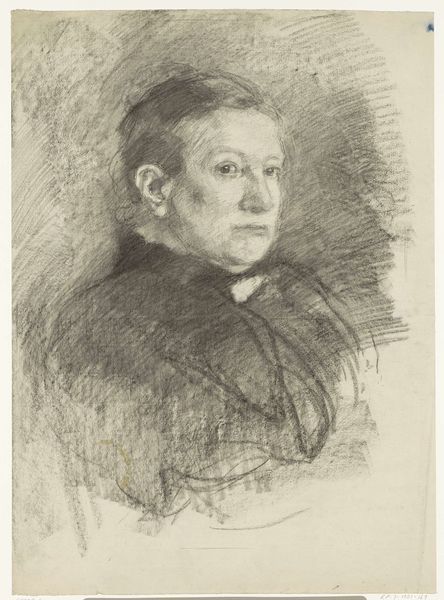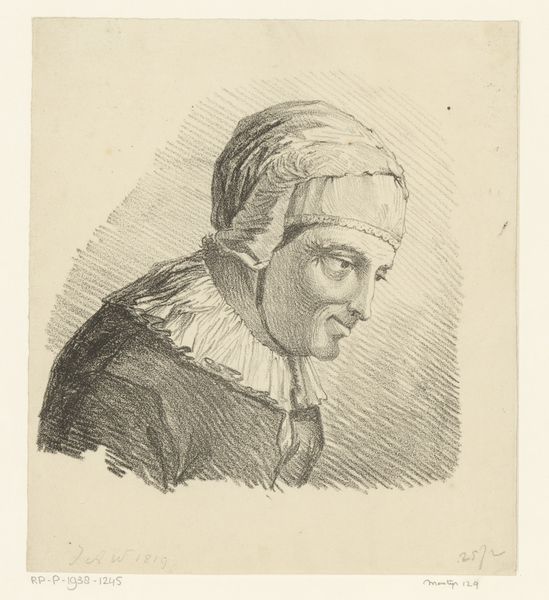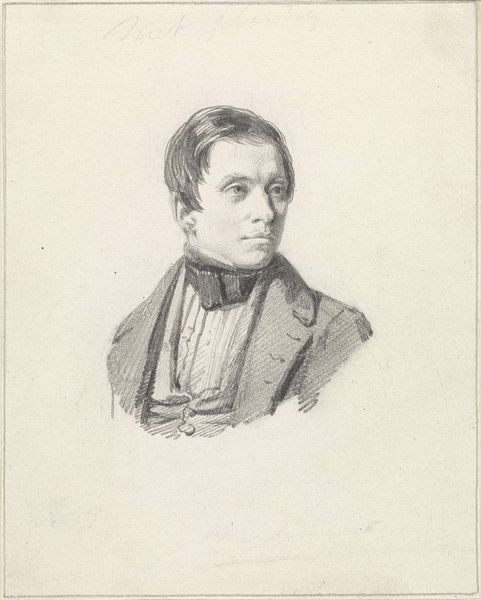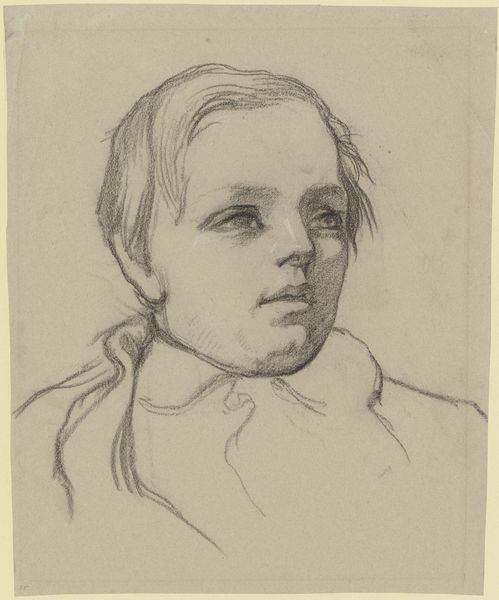
drawing, graphite, charcoal
#
portrait
#
drawing
#
charcoal drawing
#
pencil drawing
#
graphite
#
charcoal
Dimensions: height 100 mm, width 71 mm
Copyright: Rijks Museum: Open Domain
Huib van Hove made this portrait of a young boy using etching, a printmaking technique, sometime in the mid-19th century. The image itself, rendered in a flurry of lines, presents us with a curious set of questions about the culture of portraiture in the Netherlands at this time. Who was this boy? What was the occasion for making this portrait? While we can only speculate about the answers, it’s important to consider the social function of art and how it operates within specific contexts. Perhaps the boy came from a wealthy family who were able to afford the commission of an artist. Or perhaps the artist had a particular interest in childhood or in capturing the likenesses of ordinary people. To learn more, we can look at the history of the Rijksakademie, the art academy in Amsterdam. Understanding the artistic conventions that van Hove was taught, or reacted against, is crucial to interpreting not just the image itself, but also the social and institutional context in which it was produced.
Comments
No comments
Be the first to comment and join the conversation on the ultimate creative platform.
